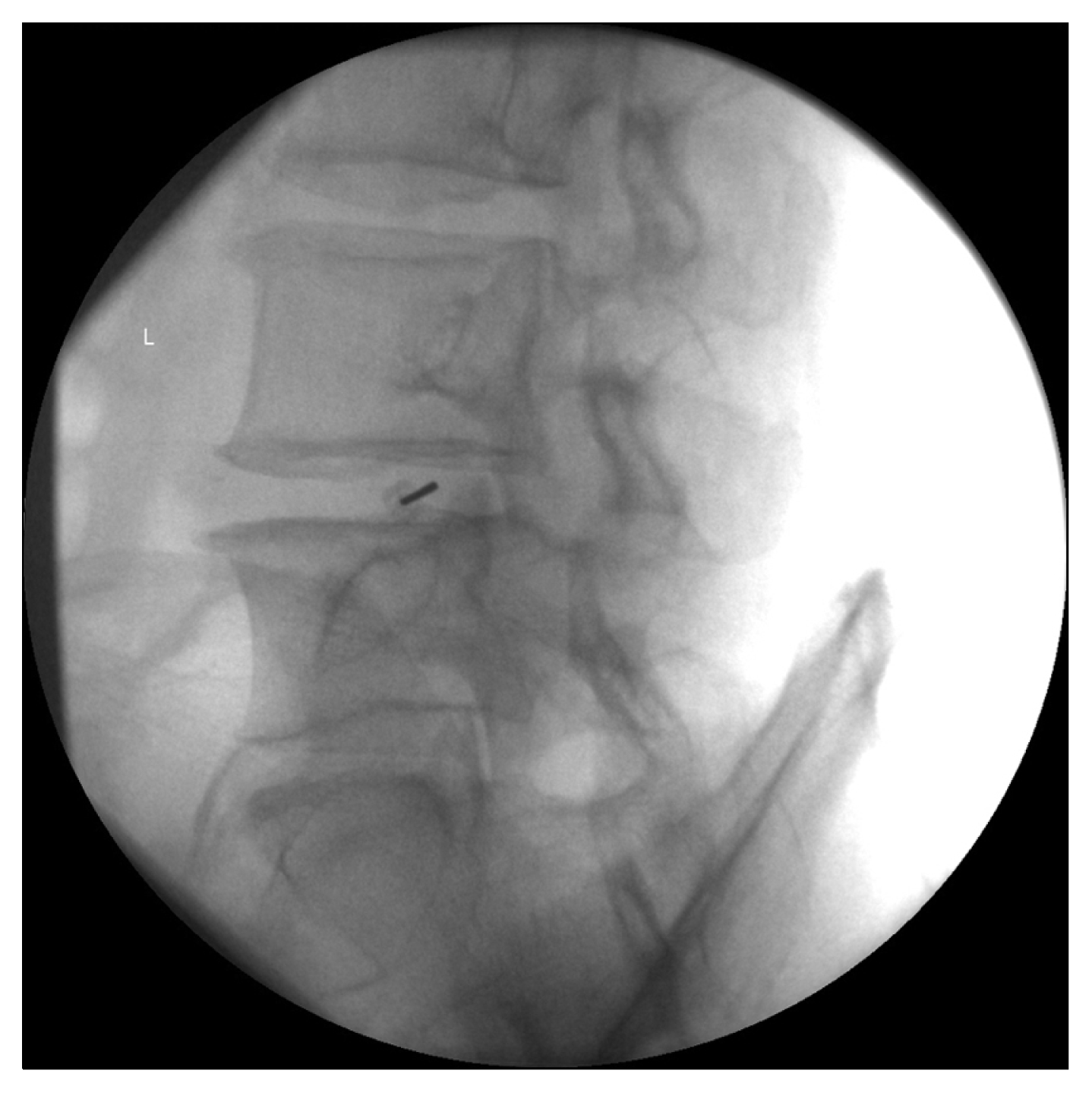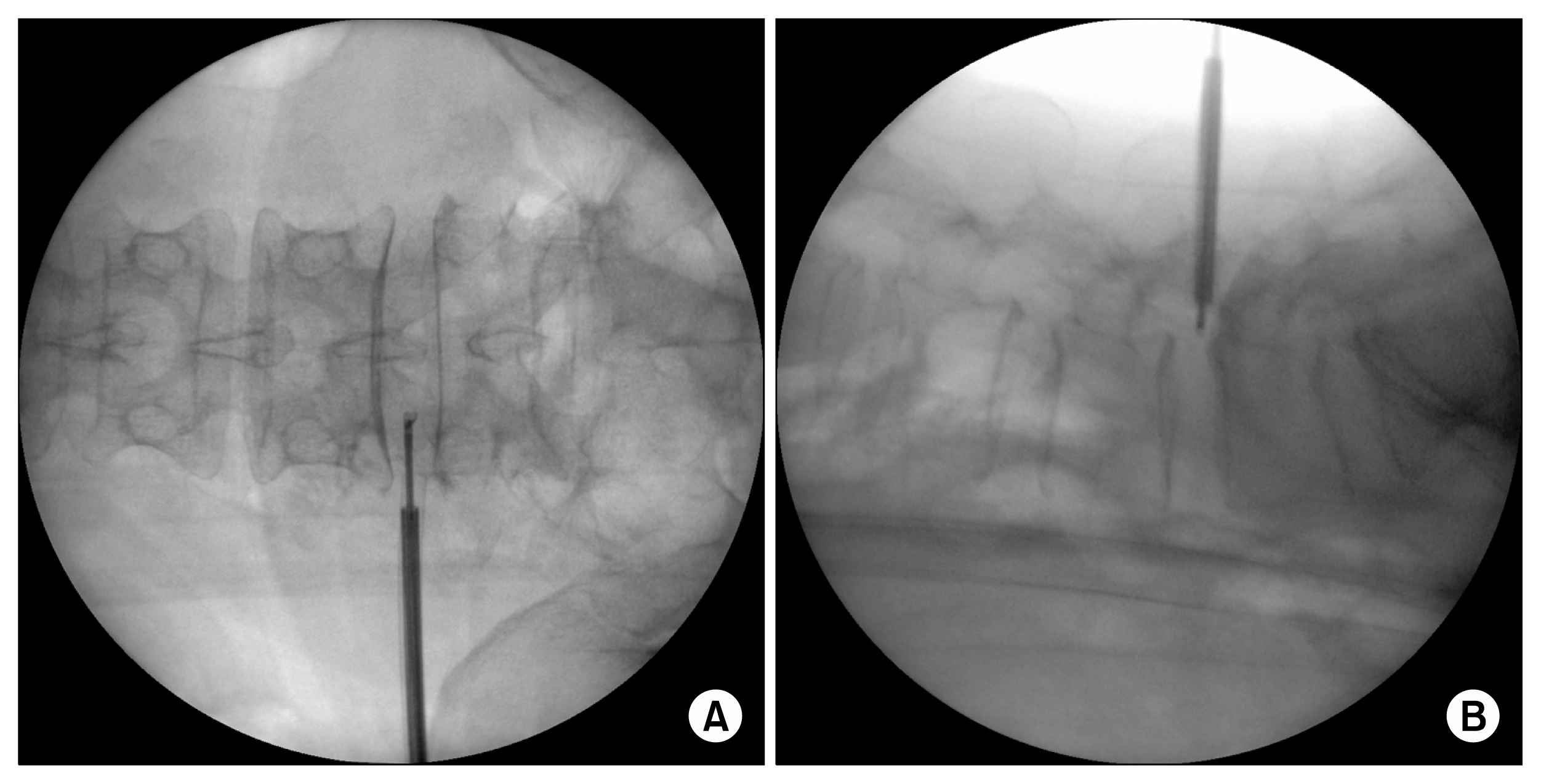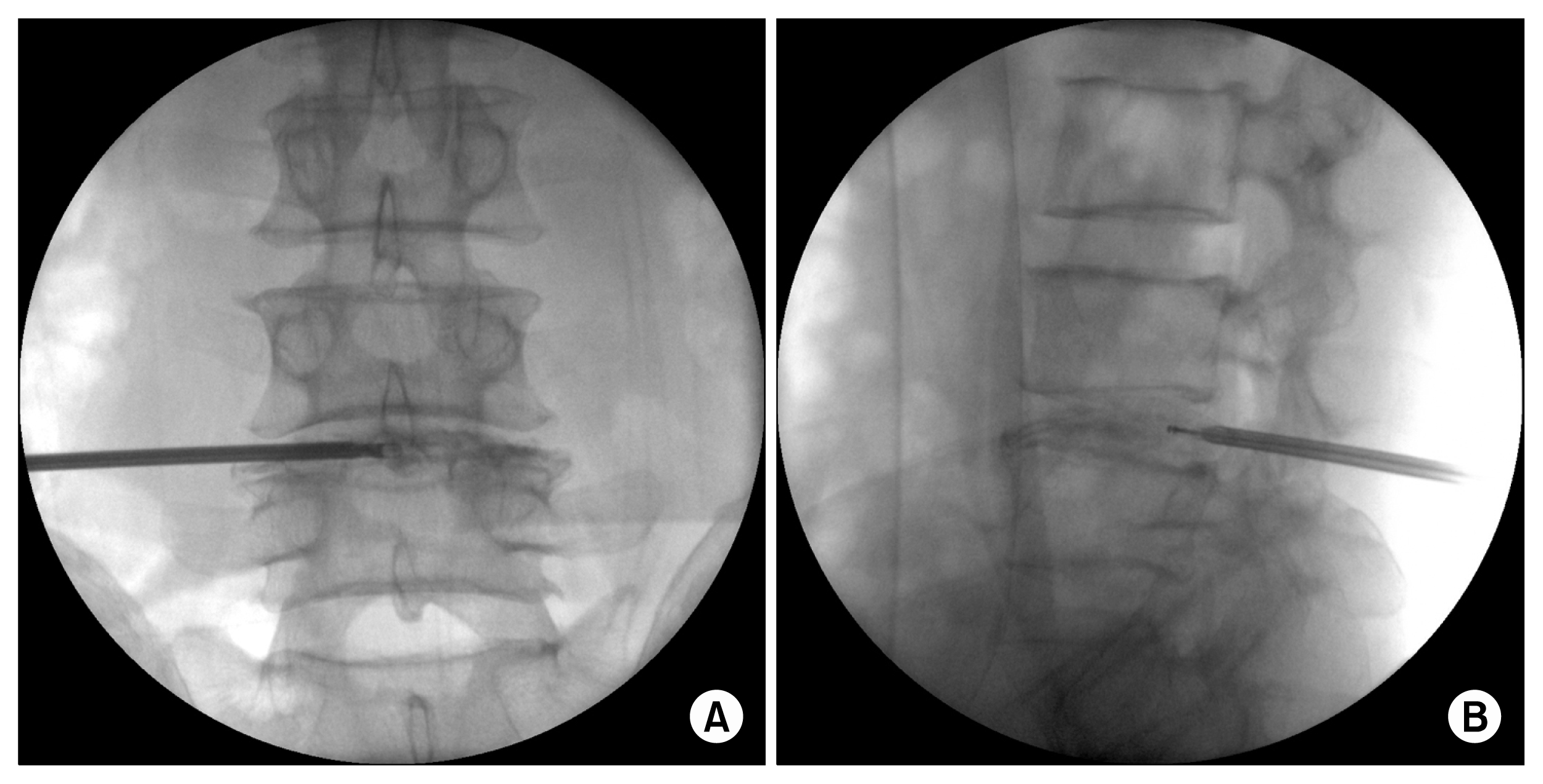1. Schwarzer AC, Aprill CN, Derby R, Fortin J, Kine G, Bogduk N. The prevalence and clinical features of internal disc disruption in patients with chronic low back pain. Spine (Phila Pa 1976). 1995; 20:1878–83. DOI:
10.1097/00007632-199509000-00007.

2. Peng BG, Wu WW, Hou SX, Zhang CL, Yang Y, Wang XH, et al. The pathogenesis of discogenic low back pain. Chin J Surg. 2004; 42:720–4.

3. Freemont AJ, Peacock TE, Goupille P, Hoyland JA, O’Brien J, Jayson MI. Nerve ingrowth into diseased intervertebral disc in chronic back pain. Lancet. 1997; 350:178–81. DOI:
10.1016/S0140-6736(97)02135-1. PMID:
9250186.

4. Peng B, Wu W, Hou S, Li P, Zhang C, Yang Y. The pathogenesis of discogenic low back pain. J Bone Joint Surg Br. 2005; 87:62–7. DOI:
10.1302/0301-620X.87B1.15708. PMID:
15686239.

5. Peng B, Hao J, Hou S, Wu W, Jiang D, Fu X, et al. Possible pathogenesis of painful intervertebral disc degeneration. Spine (Phila Pa 1976). 2006; 31:560–6. DOI:
10.1097/01.brs.0000201324.45537.46.

6. Barendse GA, van Den Berg SG, Kessels AH, Weber WE, van Kleef M. Randomized controlled trial of percutaneous intradiscal radiofrequency thermocoagulation for chronic discogenic back pain: lack of effect from a 90-second 70 C lesion. Spine (Phila Pa 1976). 2001; 26:287–92. DOI:
10.1097/00007632-200102010-00014.
7. Kapural L, Hayek S, Malak O, Arrigain S, Mekhail N. Intradiscal thermal annuloplasty versus intradiscal radiofrequency ablation for the treatment of discogenic pain: a prospective matched control trial. Pain Med. 2005; 6:425–31. DOI:
10.1111/j.1526-4637.2005.00073.x. PMID:
16336479.

8. Oh WS, Shim JC. A randomized controlled trial of radiofrequency denervation of the ramus communicans nerve for chronic discogenic low back pain. Clin J Pain. 2004; 20:55–60. DOI:
10.1097/00002508-200401000-00011.

9. Nachemson A, Zdeblick TA, O’Brien JP. Lumbar disc disease with discogenic pain. What surgical treatment is most effective? Spine (Phila Pa 1976). 1996; 21:1835–8. DOI:
10.1097/00007632-199608010-00023.
11. Khot A, Bowditch M, Powell J, Sharp D. The use of intradiscal steroid therapy for lumbar spinal discogenic pain: a randomized controlled trial. Spine (Phila Pa 1976). 2004; 29:833–6. DOI:
10.1097/00007632-200404150-00002.
12. Lee JH, Lee SH. Clinical efficacy and its prognostic factor of percutaneous endoscopic lumbar annuloplasty and nucleoplasty for the treatment of patients with discogenic low back pain. World Neurosurg. 2017; 105:832–40. DOI:
10.1016/j.wneu.2017.06.112. PMID:
28648909.

13. Lee JH, Lee SH. Clinical efficacy of percutaneous endoscopic lumbar annuloplasty and nucleoplasty for treatment of patients with discogenic low back pain. Pain Med. 2016; 17:650–7. PMID:
26893114.

15. Kumar N, Kumar A, Siddharth MS, Sambhav PS, Tan J. Annulo-nucleoplasty using Disc-FX in the management of lumbar disc pathology: early results. Int J Spine Surg. 2014; 8:18. DOI:
10.14444/1018.

16. Hellinger S. Treatment of contained lumbar disc herniations using radiofrequency assisted micro-tubular decompression and nucleotomy: four year prospective study results. Int J Spine Surg. 2014; 8:24. DOI:
10.14444/1024.

17. Lee SH, Lee SH, Lim KT. Trans-sacral epiduroscopic laser decompression for symptomatic lumbar disc herniation: a preliminary case series. Photomed Laser Surg. 2016; 34:121–9. DOI:
10.1089/pho.2015.4000. PMID:
26901647.

18. Cheng J, Zheng W, Wang H, Li C, Wang J, Zhang Z, et al. Posterolateral transforaminal selective endoscopic diskectomy with thermal annuloplasty for discogenic low back pain: a prospective observational study. Spine (Phila Pa 1976). 2014; 39(26 Spec No):B60–5. DOI:
10.1097/BRS.0000000000000495.
19. Derby R, Eek B, Chen Y, O’neill C, Ryan D. Intradiscal Electrothermal Annuloplasty (IDET): a novel approach for treating chronic discogenic back pain. Neuromodulation. 2000; 3:82–8. DOI:
10.1046/j.1525-1403.2000.00082.x. PMID:
22151403.

20. Yu SW, Sether LA, Ho PS, Wagner M, Haughton VM. Tears of the anulus fibrosus: correlation between MR and pathologic findings in cadavers. AJNR Am J Neuroradiol. 1988; 9:367–70. PMID:
3128085.
21. Bogduk N, Tynan W, Wilson AS. The nerve supply to the human lumbar intervertebral discs. J Anat. 1981; 132:39–56. PMID:
7275791. PMCID:
1233394.
22. Singh V, Piryani C, Liao K, Nieschulz S. Percutaneous disc decompression using coblation (nucleoplasty) in the treatment of chronic discogenic pain. Pain Physician. 2002; 5:250–9.
23. Manchikanti L, Falco FJ, Benyamin RM, Caraway DL, Deer TR, Singh V, et al. An update of the systematic assessment of mechanical lumbar disc decompression with nucleoplasty. Pain Physician. 2013; 16(2 Suppl):SE25–54. PMID:
23615886.
24. Hirsch JA, Singh V, Falco FJ, Benyamin RM, Manchikanti L. Automated percutaneous lumbar discectomy for the contained herniated lumbar disc: a systematic assessment of evidence. Pain Physician. 2009; 12:601–20. PMID:
19461826.
25. Moon BJ, Lee HY, Kim KN, Yi S, Ha Y, Yoon DH, et al. Experimental evaluation of percutaneous lumbar laser disc decompression using a 1414 nm Nd:YAG laser. Pain Physician. 2015; 18:E1091–9. PMID:
26606022.




 PDF
PDF Citation
Citation Print
Print







 XML Download
XML Download